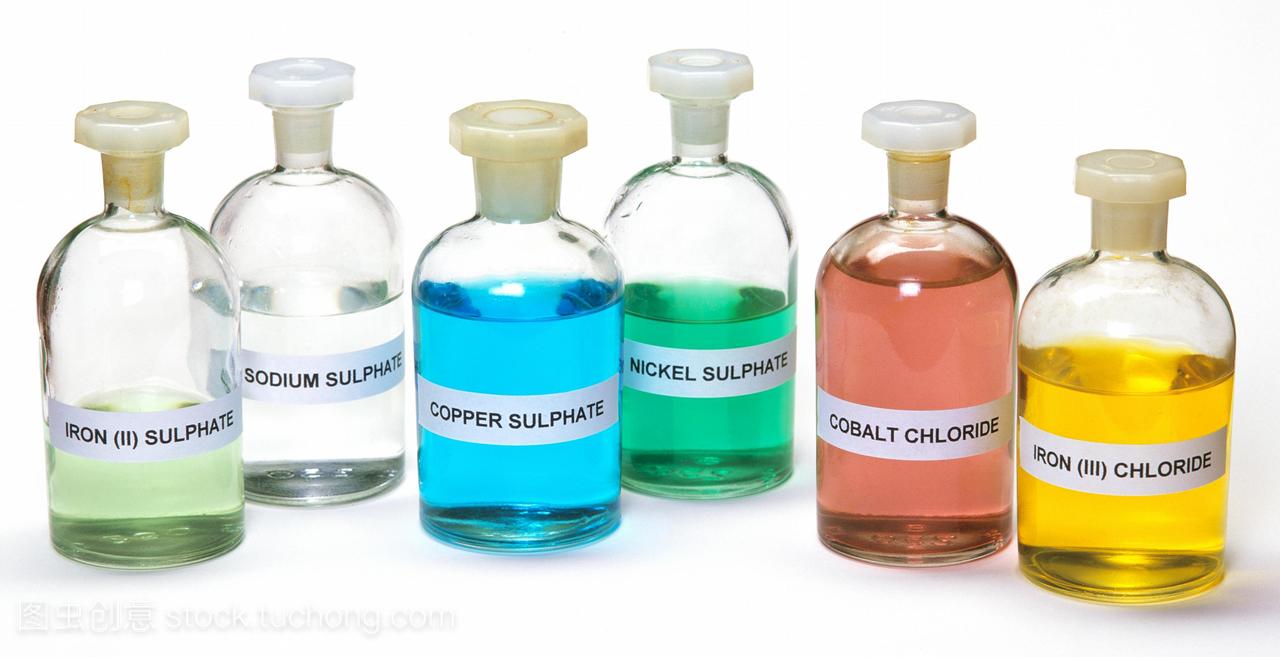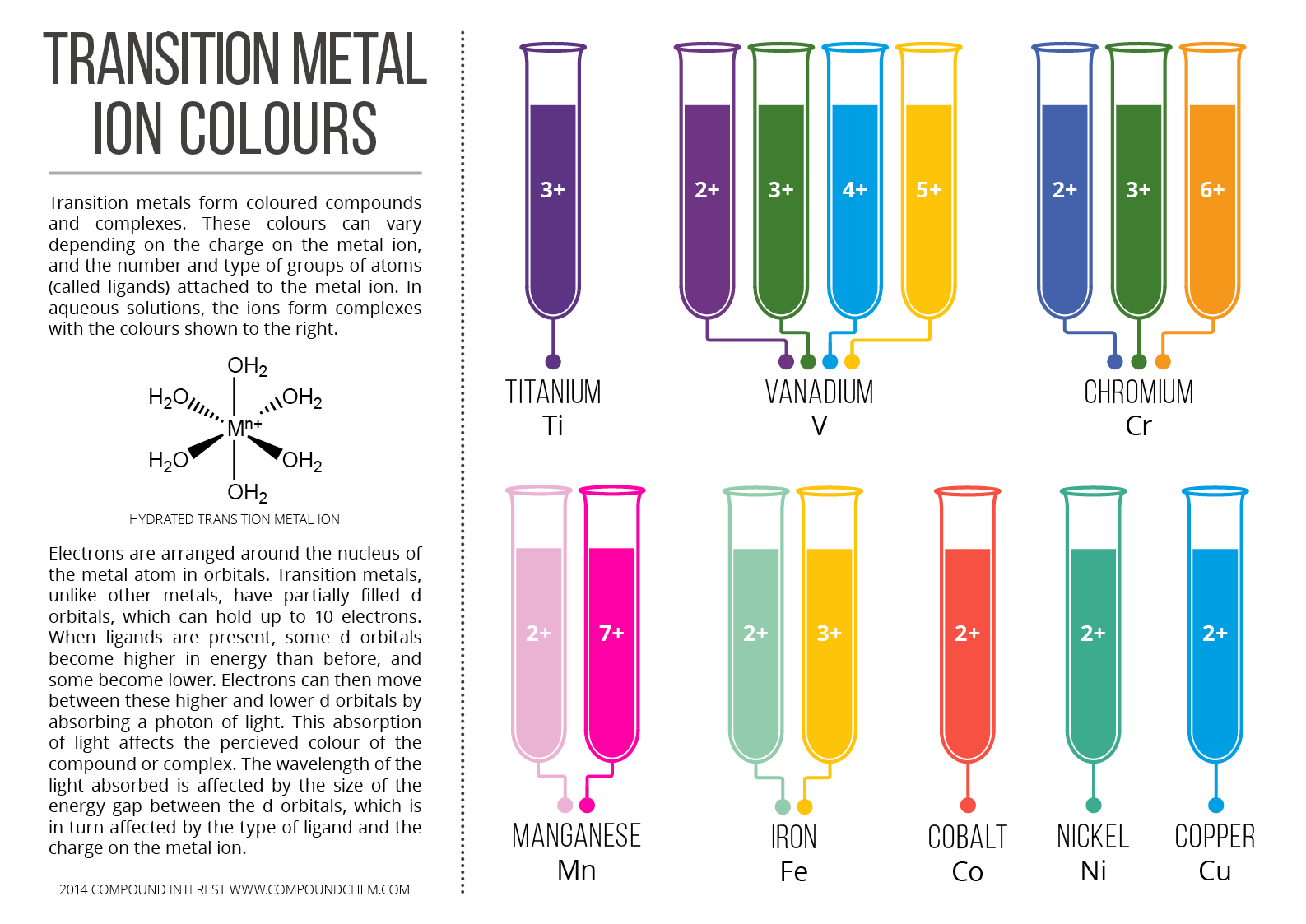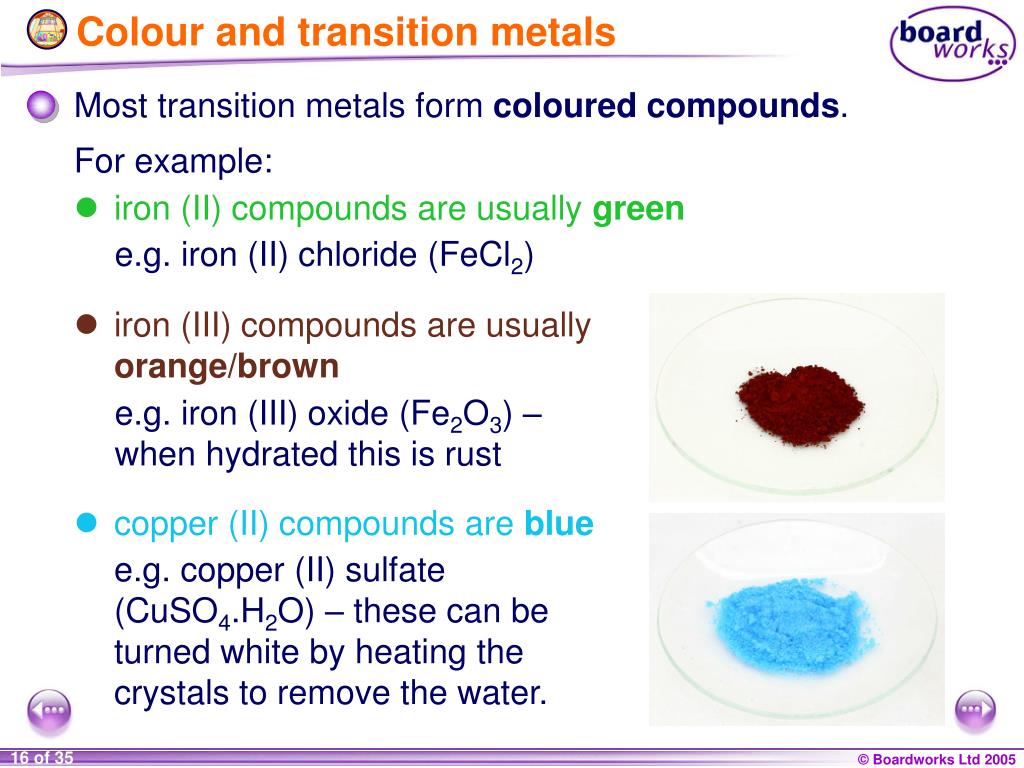Why Transition Metals Form Coloured Compounds
Why Transition Metals Form Coloured Compounds - Web the usual definition of a transition metal is one which forms one or more stable ions which have incompletely filled d orbitals. The d orbitals split and. Web 1 2 3 4 5 6 7 8 9 10 transition metals the transition metals are in the block in the middle of the periodic table, between groups 2 and 3. They form coloured compounds and act as catalysts. Web feb 2, 2016 8: Web in their lower oxidation states, the transition elements form ionic compounds; Web the transition metals generally form coloured compounds. Bonding in transition metal compounds and coordination complexes 8.2: Web why are transition metal complexes coloured? Answer verified 237.9k + views.
Web cbse cbse study material live join vedantu’s free mastercalss explain why: Web this page explains what a transition metal is in terms of its electronic structure, and then goes on to look at the general features of transition metal chemistry. Web why do transition metals form coloured compounds? The presence of d orbitals is a common feature of transition components. Transition elements have 3d orbitals with the same energy level however when molecules/ligands form dative covalent. In their higher oxidation states, they form covalent compounds or. Web the transition metals are the metallic elements that serve as a bridge, or transition, between the two sides of the table. Be aware that this is only an. Bonding in simple molecules that contain transition metals this page explains what a. Web why are transition metal complexes coloured?
Answer verified 237.9k + views. Bonding in transition metal compounds and coordination complexes 8.2: Web this page explains what a transition metal is in terms of its electronic structure, and then goes on to look at the general features of transition metal chemistry. They are all metals and include many. Web in their lower oxidation states, the transition elements form ionic compounds; The lanthanides and the actinides at the bottom of. Bonding in simple molecules that contain transition metals this page explains what a. Web why do transition metals form coloured compounds? The d orbitals split and. Transition elements have 3d orbitals with the same energy level however when molecules/ligands form dative covalent.
硫酸铜溶液是什么颜色_硫酸铜溶液的颜色_微信公众号文章
They have high melting points and densities, and are strong and hard. In their higher oxidation states, they form covalent compounds or. Web the usual definition of a transition metal is one which forms one or more stable ions which have incompletely filled d orbitals. Web 1 2 3 4 5 6 7 8 9 10 transition metals the transition.
SPMStraightA — Transition Metals make coloured compounds
Transition metals and their many compounds act as good catalyst. Web this page explains what a transition metal is in terms of its electronic structure, and then goes on to look at the general features of transition metal chemistry. Web the transition metals are the metallic elements that serve as a bridge, or transition, between the two sides of the.
13 Transition Metals & Colored Complexes The!Mad!Scientist!
They have high melting points and densities, and are strong and hard. Transition elements form coloured compounds. The presence of d orbitals is a common feature of transition components. Web why do transition metals form coloured compounds? Web in their lower oxidation states, the transition elements form ionic compounds;
savvychemist GCSE OCR Gateway C41c Transition metal properties
Transition elements form coloured compounds. Web the transition metals generally form coloured compounds. Web cbse cbse study material live join vedantu’s free mastercalss explain why: Web this page explains what a transition metal is in terms of its electronic structure, and then goes on to look at the general features of transition metal chemistry. Bonding in simple molecules that contain.
PPT KS4 Chemistry PowerPoint Presentation, free download ID6307470
The lanthanides and the actinides at the bottom of. They form coloured compounds and act as catalysts. Web the usual definition of a transition metal is one which forms one or more stable ions which have incompletely filled d orbitals. Web 3 rows transition metals have high melting points and densities, form coloured compounds and act as. Bonding in transition.
Transition Metals as Colored Compounds
Bonding in simple molecules that contain transition metals this page explains what a. Web the usual definition of a transition metal is one which forms one or more stable ions which have incompletely filled d orbitals. Web the transition metals are the metallic elements that serve as a bridge, or transition, between the two sides of the table. Web 1.
dblock elements 2 Explaining the origin of colour in their salts
Answer verified 237.9k + views. Web in their lower oxidation states, the transition elements form ionic compounds; The d orbitals split and. Web the transition elements are metals. Web this page explains what a transition metal is in terms of its electronic structure, and then goes on to look at the general features of transition metal chemistry.
science chemistry compound transition metals Fundamental Photographs
Zinc with the electronic structure [ar]. The d orbitals split and. Web cbse cbse study material live join vedantu’s free mastercalss explain why: Web the transition metals are the metallic elements that serve as a bridge, or transition, between the two sides of the table. Bonding in transition metal compounds and coordination complexes 8.2:
Transition Metal Ion Colors
The d orbitals split and. Bonding in transition metal compounds and coordination complexes 8.2: Transition elements form coloured compounds. The presence of d orbitals is a common feature of transition components. Web why do transition metals form coloured compounds?
PPT Transition Metal Chemistry PowerPoint Presentation, free download
Web the usual definition of a transition metal is one which forms one or more stable ions which have incompletely filled d orbitals. Web cbse cbse study material live join vedantu’s free mastercalss explain why: The d orbitals split and. Transition elements have 3d orbitals with the same energy level however when molecules/ligands form dative covalent. The presence of d.
Transition Elements Have 3D Orbitals With The Same Energy Level However When Molecules/Ligands Form Dative Covalent.
Web the transition metals generally form coloured compounds. Web this page explains what a transition metal is in terms of its electronic structure, and then goes on to look at the general features of transition metal chemistry. Web 3 rows transition metals have high melting points and densities, form coloured compounds and act as. Transition elements form coloured compounds.
They Have High Melting Points And Densities, And Are Strong And Hard.
Answer verified 237.9k + views. Web in their lower oxidation states, the transition elements form ionic compounds; Web why do transition metals form coloured compounds? Web the transition metals are the metallic elements that serve as a bridge, or transition, between the two sides of the table.
Web Why Are Transition Metal Complexes Coloured?
Web the transition elements are metals. Web feb 2, 2016 8: Web the usual definition of a transition metal is one which forms one or more stable ions which have incompletely filled d orbitals. They are all metals and include many.
Web Cbse Cbse Study Material Live Join Vedantu’s Free Mastercalss Explain Why:
Bonding in transition metal compounds and coordination complexes 8.2: The lanthanides and the actinides at the bottom of. Web the transition elements and main group elements can form coordination compounds, or complexes, in which a central metal atom or ion is bonded to one or. Bonding in simple molecules that contain transition metals this page explains what a.









